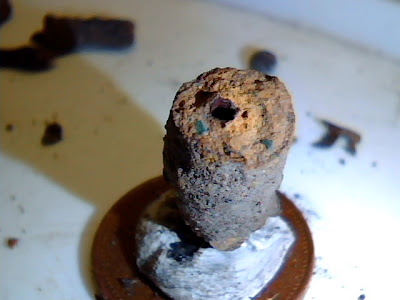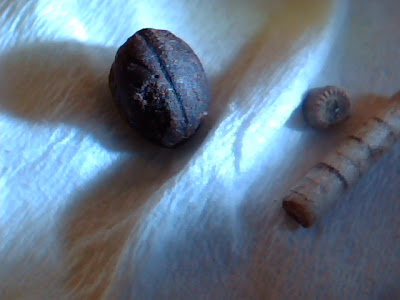Friday 19 August 2011
New cervical vertabrae
The wrist band of the glove points to the hole in the packed gravels the cervical vertabrae was found.

Today after a lot of digging to remove collapsed lacustrine material using half a spade! it snapped! ive found a cervical vertebrae even further into the packed gravels, it doesn't mach bovine or horse.
Monday 8 August 2011
Stainton gravel beds, and clay deposits.
These very good pics were taken by Andy cooper a geologist from tvriggs who has helped me a lot along with Alan, the two lads visited the site with me and although i had doubts about the group early doors i was totally won over by there professionalism and friendly approach, i am totally gob smacked about the level of Andy's commitment to discovering more about the geology of this area, the man deserves a medal!

 |
Isolated layer below |
 |
preserved organic layer underneath the Stainton gravel beds. |
I have recently collected and sieved a sample of the organic material pictured below and found a lot of what look to be hazelnuts and other unknown seeds, the hazelnuts are intact yet hollow.
Close up of a section of the Stainton gravel beds, with organic material between the two fine gravel layers, for some as yet unknown reason at least a third of these smaller gravels are highly magnetic, i am going to collect samples from deeper into the gravels for the tvrigs group to make a deeper petrographic analysis of the magnetic meterial. |
 |
One layer below my tea cup, and probably at least another two above the Stainton gravel beds pictured above. |
 |
| Close up of two separate layers |
Location:Cleveland England
Maltby, Middlesbrough, Stockton-on-Tees, UK
Subscribe to:
Posts (Atom)










































